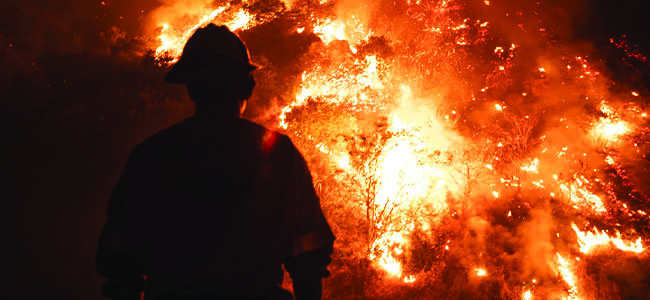
Clearing the Air on Wildfire Smoke Exposure
Outdoor workers can be left vulnerable to wildfire smoke exposure unless action is taken to protect them.
- By Alex Saurman
- Nov 08, 2023
Wildfires have hit North America hard in recent years. The wildfires that struck Canada in the summer of 2023 are perhaps one of the most devastating recent examples. Of course, these disasters have many harsh effects on the land and its people, but the damage to air quality resulting from wildfire smoke is perhaps one of the most pervasive.
On June 7, New York City Mayor Eric Adams said that the Air Quality Index (AQI), which measures air pollution using a scale of 0, representing good air quality, to 500, representing hazardous air quality, had reached 484. New York and other areas, like Washington D.C., Baltimore and Philadelphia, issued air quality health advisories and alerts. In such situations, residents are often advised to stay indoors and wear masks if they go outside. But what effects does wildfire smoke have on people, like outdoor workers, who are exposed to it?
Though not much is known about the effects of wildfire smoke specifically on outdoor workers, those exposed to wildfire smoke may experience eye irritation, coughing and pneumonia, per the National Institute for Occupational Safety and Health (NIOSH), or more severe side effects such as chest pain, heart attacks and lung complications, according to the Washington State Department of Labor & Industries.
Protecting Workers from Exposure
Given the potential impact it can have, it is certainly in employers’ best interests to minimize workers’ exposure to wildfire smoke. Thankfully, NIOSH recommends a few key strategies that can guard outdoor workers against the debilitating effect of wildfire smoke exposure.
- Monitor and consider relocation. When working outdoors, employers should monitor air quality regularly. If action is needed, workers may be able to relocate to an area where smoke is less prevalent, or rescheduling might be able to accommodate smoky conditions. NIOSH suggests workers at least take frequent breaks in smoke-free areas.
- Use NIOSH-approved respirators. When working outdoors is unavoidable, workers’ best protection might be an NIOSH-approved respirator, such as an N95 or P100. More than just masks, this specialized PPE filters out not only wildfire smoke but also ash and other particulate matter with a diameter of less than 2.5 micrometers (PM2.5 particles).
- Ensure proper respirator usage. Respirators can reduce exposure by at least 10 times, NIOSH says. However, it’s imperative they are used correctly. Respirators should form a tight seal to the face, with all straps properly positioned and the noseclip firmly affixed. Also, employees should be clean-shaven to allow for respirators to have the best fit.
- Follow applicable regulations. Employers should follow an OSHA-compliant respiratory protection program. Likewise, state regulations—especially in California, Oregon and Washington—can provide invaluable guidance on wildfire smoke exposure. Finally, workers should have the necessary training for respirator selection and use.
The AQI’s Role in Outdoor Work
While broader protections should be in place, workers can take proactive steps to combat hazardous air quality caused by wildfire smoke. In fact, the National Council of Occupational Safety and Health (National COSH) recommends two steps workers can take to ensure their safety around such conditions: watch the AQI and based on the reading, “advocate with your employer for proper protections.”
The AQI is broken up into six categories that include AQI range, health concern and color:
- 0 to 50, Good, Green
- 51 to 100, Moderate, Yellow
- 101 to 150, Unhealthy for Sensitive Groups, Orange
- 151 to 200, Unhealthy, Red
- 201 to 300, Very Unhealthy, Purple
- 301 and up, Hazardous, Maroon
When the AQI falls in a specific category, general actions—not specifically for workers and employers—that should be considered, according to the Environmental Protection Agency, include:
- Green: No need to take action
- Yellow: Unless you’re “unusually sensitive,” no need to take action
- Orange: Taking extra precautions and staying alert for those who are sensitive or have asthma or heart disease
- Red: Shortening outdoor activity time, lowering the activity’s physical demands and resting. For people who are sensitive, continue the activity indoors or delay it. According to Washington D.C. Mayor Muriel Bowser, air filters should also be considered, and sensitive people can utilize masks when outside.
- Purple: Shortening the activity, going indoors or delaying it. Sensitive people should “avoid all physical activity outdoors.” Per Bowser’s news release, consider utilizing an “N95 or KN95 equivalent” mask when outside.
- Maroon: Staying inside and not performing outdoor activities that are physical.
To check the AQI in your area, visit airnow.com.
This article originally appeared in the November/December 2023 issue of Occupational Health & Safety.